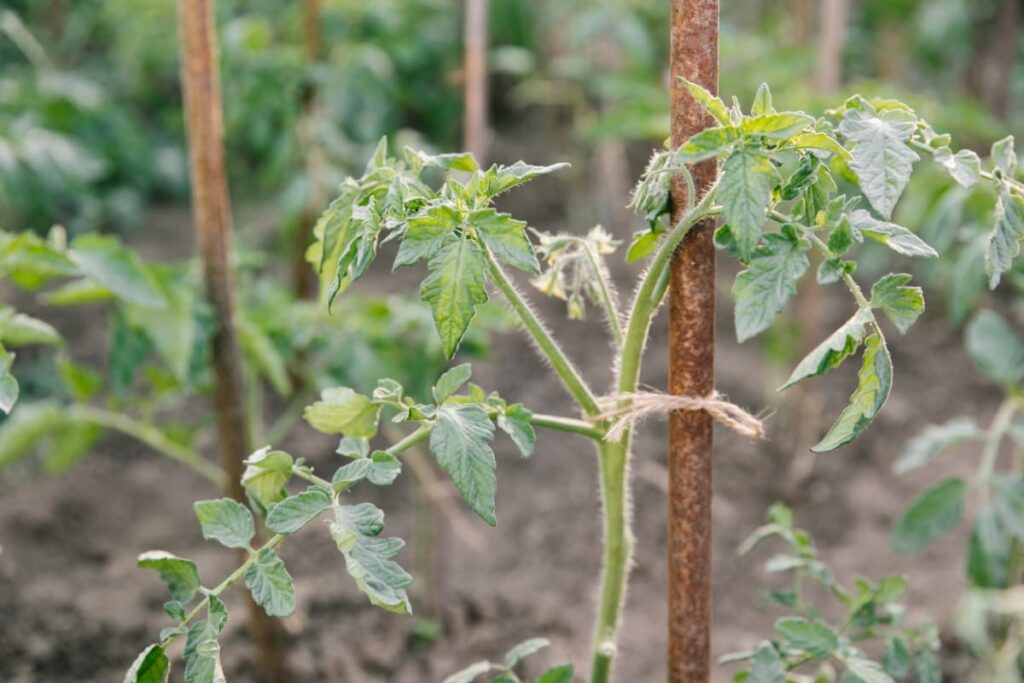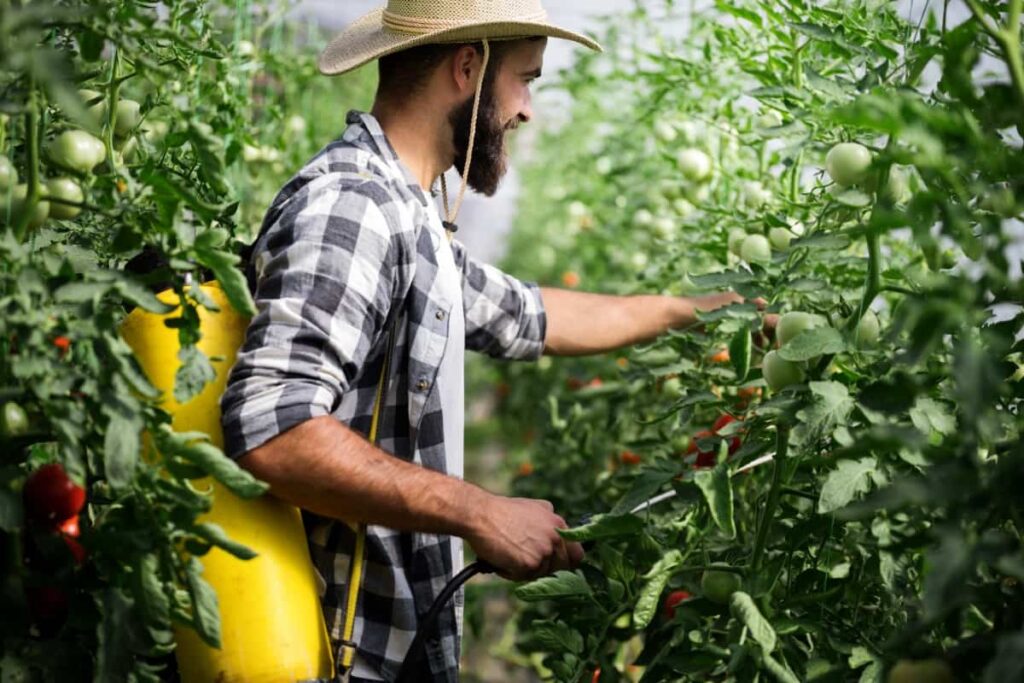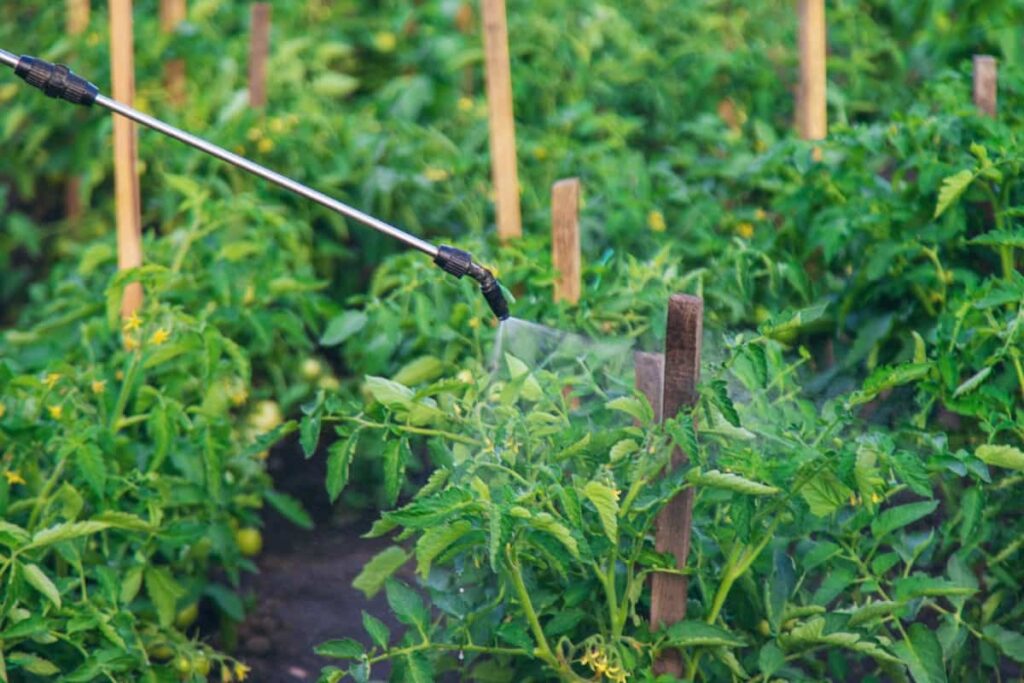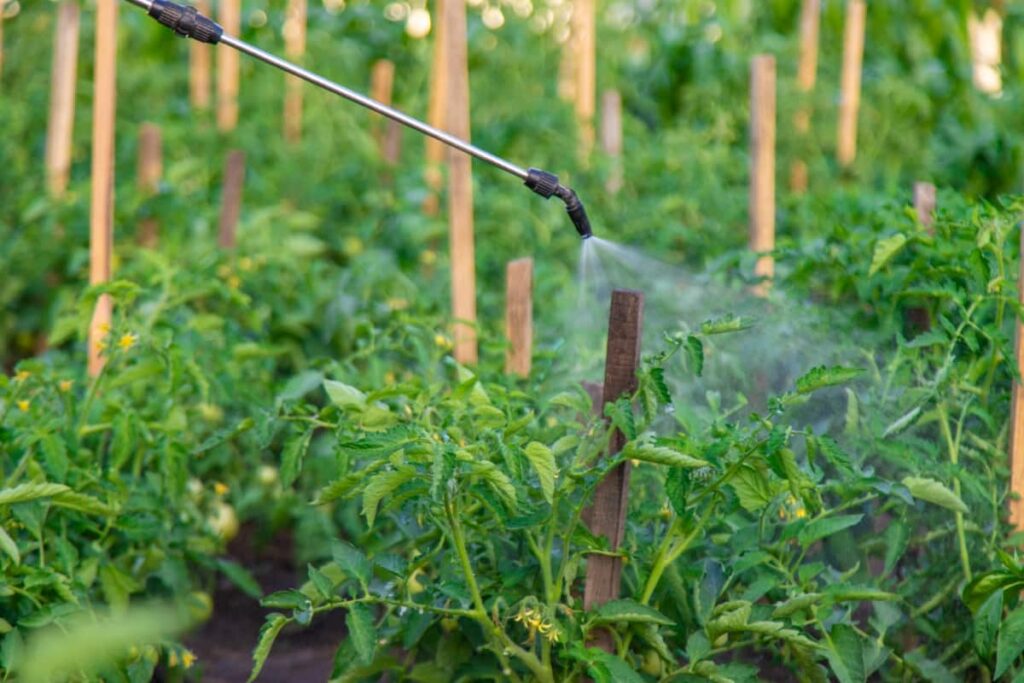Embarking on the journey of Tomato Yellow Leaf Curl Virus management requires a nuanced approach. This blog unveils a holistic guide, delving into treatments that encompass chemical, organic, and natural methods. As we navigate the intricate landscape of plant health, understanding the science behind each method becomes crucial. Join us in exploring effective strategies to combat this virus, ensuring a thriving tomato crop through a balanced fusion of Chemical and sustainable practices.

Tomato Yellow Leaf Curl Virus Management
About Tomato Yellow Leaf Curl Virus
The tomato yellow leaf curl virus is a common viral disease of tomatoes that causes severe economic losses in tropical, subtropical regions. TYLCV is transmitted by the whitefly (Bemisia tabaci), which can also infect other Solanaceae family plants, such as pepper, eggplant, potato, and tobacco. TYLCV infection results in yellowing and curling of young leaves, stunting, flower drop, and reduced fruit yield. TYLCV belongs to the genus Begomovirus and family Geminiviridae and has a single-stranded DNA genome that encodes six proteins.
Organic Methods for Managing Tomato Yellow Leaf Curl Virus
Organic methods for managing TYLCV involve enhancing plant defenses and reducing the whitefly vector population. These methods include using resistant tomato varieties, applying organic fertilizers and composts, mulching soil with organic materials, intercropping or rotating tomatoes with non-host crops, removing infected plants and weeds, and installing yellow sticky traps to attract and capture whiteflies. These methods help improve soil health and plant nutrition and reduce the transmission of the virus.
Natural Remedies to Combat Tomato Yellow Leaf Curl Virus
Natural remedies to combat TYLCV are based on using plant extracts or botanical pesticides that have antiviral or insecticidal properties.
- Spraying tomato plants with garlic extract can inhibit TYLCV replication and reduce whitefly infestation.
- Spray tomato plants with neem oil that can act as a repellent, antifeedant, oviposition deterrent, and growth regulator for whiteflies.
- Spraying tomato plants with chili pepper extract can induce systemic acquired resistance in tomato plants against TYLCV.
- Spraying tomato plants with tobacco extract can kill whiteflies by nicotine poisoning.
Integrated Pest Management Strategies
Integrated pest management (IPM) strategies are based on combining different methods of TYLCV management in a compatible and synergistic way. The main components of IPM strategies are:
- Monitoring the whitefly population and TYLCV incidence using visual inspection, traps, or molecular techniques.
- Implementing cultural practices that can reduce whitefly attraction and virus transmission, such as planting dates, plant spacing, irrigation, pruning, and sanitation.
- Using biological control agents that can parasitize or predate on whiteflies, such as parasitoid wasps (Encarsia formosa), predatory bugs (Orius spp.), lacewings (Chrysoperla spp.), ladybugs (Coccinella spp.), and spiders.
- Applying chemical control only when necessary and following label instructions to avoid resistance development and environmental contamination.
In case you missed it: 14 Steps to Start Tomato Farming in the Netherlands: Yield per Hectare and Dutch Tomato Varieties

Prevention Techniques Against Tomato Yellow Leaf Curl Virus
Prevention techniques against TYLCV are based on avoiding or minimizing the exposure of tomato plants to the virus or the vector.
- Use certified virus-free seeds or seedlings that have been tested for TYLCV infection.
- Using physical barriers that can exclude whiteflies from tomato plants, such as insect-proof nets or covers.
- Using reflective mulches that can repel whiteflies by reflecting sunlight.
- Using trap crops that can attract whiteflies away from tomato plants, such as marigold or sunflower.
- Using biopesticides that can interfere with whitefly feeding or reproduction, such as Bacillus thuringiensis or Beauveria bassiana.
Choosing the Right Treatment: A Comprehensive Guide
The choice of treatment for TYLCV management depends on factors like infection severity, crop stage, resource availability, and environmental conditions. For mild infections and young crops, organic methods or natural remedies can enhance plant resistance. For moderate infections and mature crops, integrated pest management strategies can combine cultural, biological, and chemical methods. For severe infections and near-harvest crops, chemical control can quickly reduce whitefly infestation and virus transmission.
Chemical Approaches for Tomato Yellow Leaf Curl Virus Treatment
The most common chemical approach for TYLCV treatment is to control the whitefly vector using insecticides. However, this method has several limitations, such as the development of insecticide resistance, negative impacts on beneficial insects and the environment, and high costs.
Therefore, chemical control should be used judiciously and in combination with other methods, such as cultural practices, resistant varieties, and biological control agents. Some examples of insecticides that can be used against B. tabaci are neonicotinoids, pyrethroids, organophosphates, and insect growth regulators.
Science Behind Tomato Yellow Leaf Curl Virus Control
The science behind controlling TYLCV involves understanding the biology, ecology of the virus and vector, as well as their interactions with host plants. This includes understanding the molecular mechanisms of infection and replication in tomato cells, host responses to viral invasion, genetic diversity and evolution of TYLCV strains, and the behavioral and physiological traits of B. tabaci, which influence its feeding preferences and vector competence. Environmental factors also affecting population dynamics and virus transmission.
Eco-Friendly Solutions for Sustainable Virus Management
Eco-friendly solutions for sustainable virus management are based on using methods that are effective, economical, and environmentally friendly.
- Developing and deploying TYLCV-resistant or -tolerant tomato varieties that can reduce the dependence on chemical inputs and increase crop productivity.
- Promoting and adopting organic farming practices that can improve soil quality, biodiversity, and ecosystem services.
- Implementing integrated pest management programs that can optimize the use of natural resources and reduce pest pressure.
- Educating and empowering farmers and consumers about the benefits of eco-friendly solutions for TYLCV management.
In case you missed it: Types of Pink Tomatoes: Exploring 10 Best Varieties of Pink and Pink-Red Tomatoes

Tips for Successful Tomato Yellow Leaf Curl Virus Control
- Monitor your tomato plants regularly for whitefly infestation and TYLCV symptoms, and take action as soon as possible.
- Choose your tomato variety carefully according to your region, season, and market demand, and prefer resistant or tolerant varieties if available.
- Follow good agricultural practices that can enhance plant health and yield, such as proper fertilization, irrigation, pruning, and harvesting.
- Use a combination of different methods of TYLCV management that can complement each other and increase their efficacy.
- Seek advice from experts or extension agents if you have any doubts or questions about TYLCV management.
In case you missed it: Common Tomato Pests and Diseases: Prevention, Treatment, and Control Management

Conclusion
Effective management of the Tomato Yellow Leaf Curl Virus involves a balanced approach. Integrating chemical, organic, and natural methods provides a comprehensive strategy. By understanding the science behind these treatments, one can make informed choices for sustainable and successful control of this challenging plant virus.
- How to Raise Pigs in Your Own Backyard: A Comprehensive Guide
- Budget Friendly Sheep Shed Ideas: Cheap and Low-Cost Tips
- How Much Do Cattle Farmers Make: Revenue Streams in Cattle Farming
- Management Pests and Diseases in Your Cotton Field
- Sheep Farming Business Plan for Beginners
- Aquaponic Farming at Home: A Step-By-Step Guide
- Profitable Village Farming Business Ideas in 2024
- High-Yield Aquaculture: Fast-Growing Fish for Farming
- Effective Fish Pond Construction Techniques for Beginners
